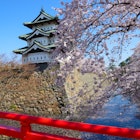
Oct 22, 2025 • 8 min read
From packing for the bullet train to handling crowds to mastering local rules of tipping, this checklist will set you up for successful Japan travel.

Oct 22, 2025 • 8 min read
From packing for the bullet train to handling crowds to mastering local rules of tipping, this checklist will set you up for successful Japan travel.

Oct 22, 2025 • 18 min read
From exploring Tokyo's nightlife to eating local dishes, these are Japan's unmissable experiences.

Aug 29, 2025 • 7 min read
From Tokyo's neon-lit streets to Kyoto's serene temples, we give you expert tips and local insights for an unforgettable Japanese adventure.

Aug 25, 2025 • 8 min read
Step beyond Japan's futuristic megacities to explore nature, science, history and culture on these small islands without the crowds.

Aug 11, 2025 • 6 min read
Five destinations beloved by those who know Japan best.

Jul 29, 2025 • 7 min read
Japan has excellent roads, dramatic landscapes and exciting regions to discover. Here are the best 10 road trips for getting to know the country better.

Jul 23, 2025 • 6 min read
Keep costs low when exploring Japan with these top money-saving tips.

Jul 15, 2025 • 9 min read
Traveling from megacities to remote islands and across towering mountains can be daunting – this guide has all you need to know about getting around Japan.

Jul 1, 2025 • 5 min read
For tourists in Japan, taxis are comfortable and convenient. Here's how to hail, ride and pay.

Jun 8, 2025 • 6 min read
From beach resorts just an hour from Tokyo to tropical island idylls, Japan's beaches are its best-kept secret. Here's our top 10.

Jun 3, 2025 • 7 min read
Our two travel writers can help you choose between Japan and South Korea for your next East Asian vacation.

Jun 3, 2025 • 8 min read
The changing seasons in Japan bring an incredible range of natural and cultural wonders. Here's how to pick the perfect time for your visit.

May 7, 2025 • 6 min read
To make the most of your time and travel budget in Tokyo, use this guide to help you decide where to spend and where to save.

Apr 8, 2025 • 8 min read
The Japan Rail Pass is more expensive than it used to be, so is it still a good deal? Here's the lowdown on getting more from the Japan Rail Pass.

Apr 5, 2025 • 6 min read
With so many mountains, it’s no surprise that hiking is a popular pursuit in Japan. Here are 6 of the best hiking routes.

Apr 3, 2025 • 9 min read
Golden Week in Japan – April 29 to May 5 – is very busy, but if you plan ahead, it’s a special time to visit.

Mar 27, 2025 • 7 min read
Begin to understand the cultural Japanese teahouse experience in Kyoto with this guide for first-timers.

Mar 20, 2025 • 13 min read
These 10-day and two-week Japan itineraries can help you plan the perfect trip.

Mar 20, 2025 • 7 min read
A local shares tips on how to be a mindful tourist in Japan.

Mar 17, 2025 • 6 min read
The spiritual heart of Japan offers unparalleled tradition, tranquility, cuisine and culture

Mar 17, 2025 • 9 min read
Here's how to experience the best flavors of Japan from sushi to tea ceremonies.

Mar 6, 2025 • 9 min read
Nara is a historic and picturesque Japanese city where sacred deer still roam the narrow streets. Here are seven reasons to visit Nara.